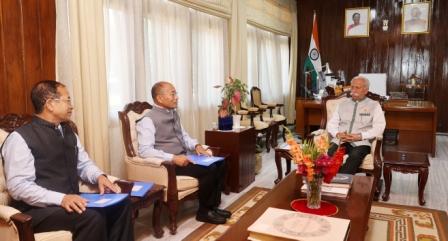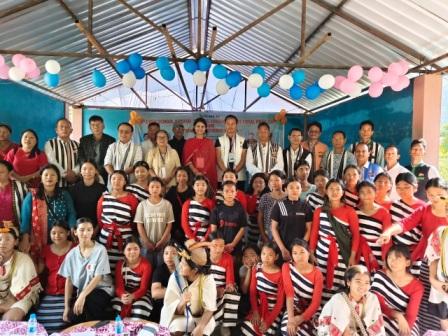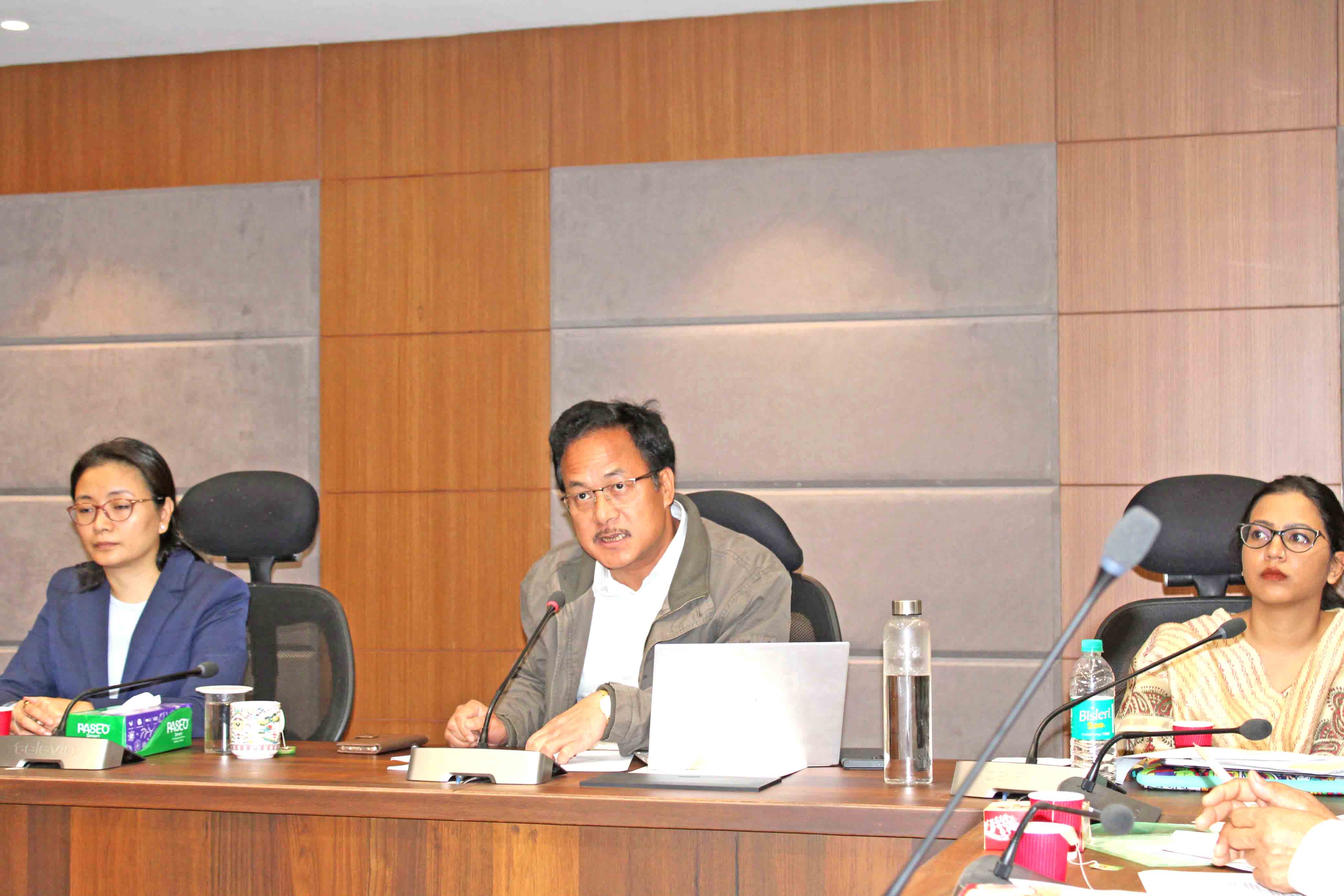-
State election commission holds meeting with political parties ahead of…
-
Privilege committee holds 5th sitting
-
Community volunteers trained on basic disaster management
-
Trade body launches protest seeking reinstatement of …
-
IFCSAP announces protest series seeking notification of APFRA rules…
-
Governor attends North East NSS Festival
-
Arunachal to hold Panchayat, municipal bodies election on Dec 15…
-
 State Election Commissioner calls on Governor
State Election Commissioner calls on Governor
-
 DC inaugurates school amenity
DC inaugurates school amenity
-
AAPSU women’s wing conducts awareness drive for schoolgirls in Pakke-Kesang

Itanagar, Jan 4: Minister for Agriculture and Horticulture, Gabriel D. Wangsu said that allocating funds under Centrally Sponsored Schemes (CSS) based solely on population metrics is detrimental to Arunachal Pradesh. Instead, he called for a framework that considers the state’s vast land resources and the socio-economic conditions of its farmers. “Our state’s huge potential for agricultural development, combined with the need to uplift the livelihoods of our farmers, must be reflected in the allocation criteria,” he pointed.
In a significant discussion on agricultural reforms chaired by Union Minister for Agriculture and Farmers Welfare, Shivraj Singh Chauhan, Minister Gabriel D. Wangsu of Arunachal Pradesh presented a comprehensive case for the state’s unique agricultural needs. Joining the meeting via video conference, Wangsu spoke on the distinctive challenges and opportunities of Arunachal Pradesh, proposing reforms to promote sustainable agricultural development in the region.
He called for change in the current funding disbursement model under CSS, stressing that the release of funds in four installments is impractical for a geographically challenging state like Arunachal Pradesh. This approach, he explained, delays the timely implementation of agricultural projects, as farming activities cannot be left incomplete due to funding shortages. To address this, Wangsu proposed a single-instalment disbursement model, which would allow for seamless project execution and efficient resource utilization.
Addressing the traditional practice of shifting cultivation prevalent in the region, Wangsu urged the central government to support sustainable alternatives such as terrace farming, capacity building and extension services. These initiatives, he noted, would help mitigate environmental degradation while enhancing agricultural productivity.
Another critical concern Wangsu raised was the burden of farmers’ contributions under the PMKSY (Per Drop More Crop) scheme. He proposed reducing the contribution from 45% to 15% to make the micro-irrigation program more accessible, especially for small and marginal farmers. He also drew attention to the strategic importance of Arunachal Pradesh along the India-China border, calling for separate financial allocations under the Vibrant Village Programme (VVP) to ensure holistic agricultural development in these remote and sensitive areas.
The Minister also highlighted the growing human-animal conflicts in Arunachal Pradesh, which pose significant challenges to agriculture and livelihoods. He advocated for an integrated policy framework that combines land-use planning, agricultural strategies and wildlife conservation to promote coexistence between humans and wildlife.
Recognizing the potential of tuber crops such as sweet potatoes, yams and tapioca, Wangsu highlighted their importance in the diets and economies of indigenous communities. He called for targeted efforts to promote their production, value addition and marketing to enhance food security and economic resilience.
In the horticulture sector, Wangsu expressed concerns over administrative delays caused by the merging of key schemes under the Krishonnati Yojana. He proposed granting functional autonomy to the horticulture division to expedite the implementation of schemes and ensure the sector’s growth. Additionally, he recommended a separate Cluster Development Programme (CDP) for North-Eastern and Himalayan states, considering their unique geographical and demographic constraints.
The Minister concluded his address by emphasizing the need for enhanced financial allocations for the horticulture sector, which holds immense ecological and economic potential for Arunachal Pradesh. “The growth of horticulture is not just an economic necessity but an ecological imperative for our state,” he remarked.
The conference was attended by agriculture and horticulture ministers from across India to share their perspectives on advancing agricultural policies and practices ahead of the budget session.

Kenter Joya Riba
(Managing Editor)She is a graduate in Science with post graduation in Sociology from University of Pune. She has been in the media industry for nearly a decade. Before turning to print business, she has been associated with radio and television.
Email: kenterjoyaz@easternsentinel.in / editoreasternsentinel@gmail.com
Phone: 0360-2212313

